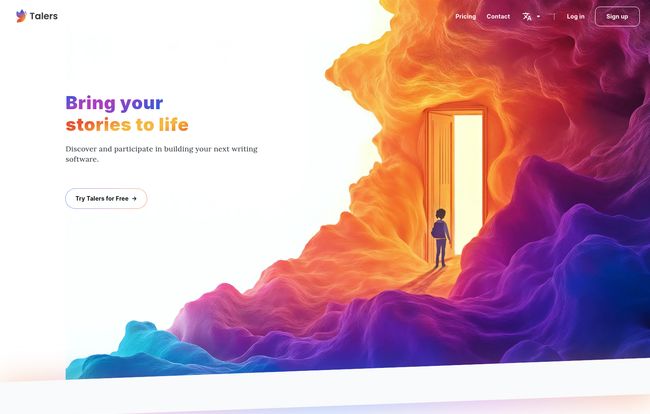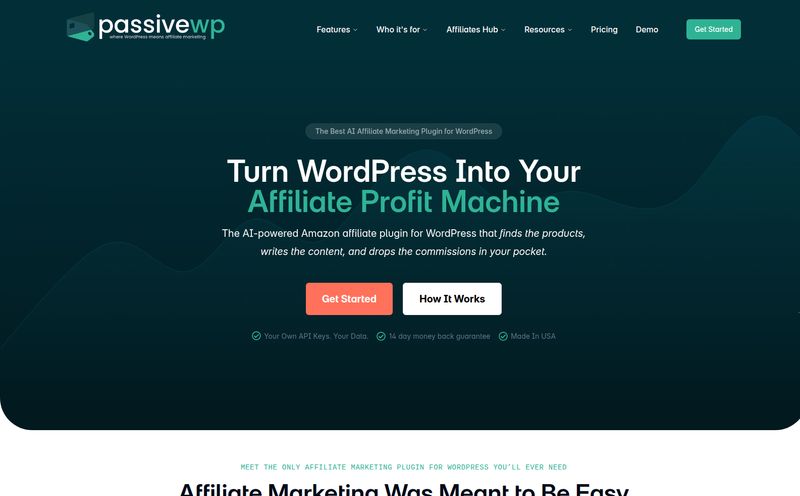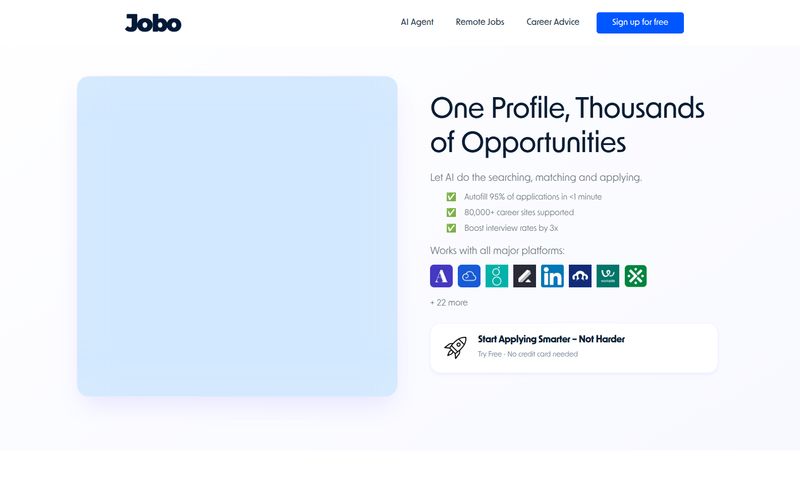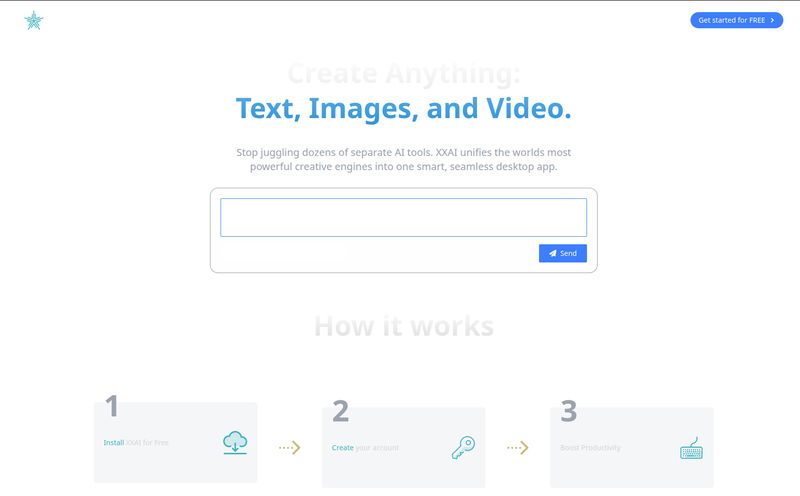If you're a writer, a content creator, or heck, even a student who writes a lot of papers, you're on a perpetual quest. The quest for the perfect writing app. We've all been there. We download something new, play with it for a week, and then slowly drift back to our messy Google Docs folders or the comforting but sometimes rigid confines of Scrivener. It’s a cycle.
So when a new tool like Talers pops onto my radar, my first reaction is a healthy dose of skepticism mixed with a little spark of hope. It calls itself a “next-generation collaborative writing application,” which is some lofty marketing speak. But the clean aesthetic and promises of AI-powered help? Okay, I'm intrigued. I’ve spent some time kicking the tires, and I have some thoughts.
What on Earth is Talers, Anyway?
At its heart, Talers is a writing and note-taking application designed to be pretty and powerful. Think of it as a minimalist, modern space for your words to live. It’s built for everything from drafting a novel, to outlining a script, to collaborating on a blog post with your team. The interface is clean, almost zen-like, which is a massive plus for anyone who gets easily distracted by a million buttons and toolbars. You know who you are.
But the secret sauce, the thing they’re really banking on, is the blend of collaboration and artificial intelligence. It's not just a blank page; it's a blank page with a smart assistant built right in, ready to help you polish your prose.

Visit Talers
The Features That Actually Matter
Any app can have a long list of features, but which ones will you actually use? I poked around and found a few things that genuinely stood out from the usual crowd.
Collaboration That Doesn't Suck
I've tried co-writing in so many apps, and it often feels... clunky. You're either tripping over each other's cursors in a shared doc or emailing versions back and forth like it's 2004. Talers aims to fix this with a more integrated approach. The idea is that you and your collaborators can work together in a shared, organized environment. This is a huge selling point for content teams, screenwriters, or author duos.
The AI Assistant in Your Pocket
This is where the Pro plan really flexes its muscles. Talers has an AI-powered proofreader that goes beyond basic spell-check. We're talking advanced corrections, a tool to rephrase awkward sentences, and even embedded dictionaries and translation. It's like having a patient editor looking over your shoulder. For a solo creator, this could be a godsend for catching those silly mistakes that slip through after you've read your own paragraph seventeen times.
A Clean, Distraction-Free Space
Look, sometimes you just need to write. The 'Distraction-free mode' in Talers is more than just a fullscreen button. The entire User Interface is designed to get out of your way. The color palette is soft, the typography is crisp. It feels less like a clunky piece of software and more like a pristine digital Moleskine. For me, the environment I write in directly impacts my output, so this focus on aesthetics is a big win.
Built By and For the Community
This one surprised me. On their site, Talers has a section where users can vote on upcoming features. I saw requests for everything from a Pomodoro timer to better folder organization. This is brilliant. It shows the developers are actually listening to their user base, rather than just building features in a vacuum. It makes you feel like you're part of building the tool, not just using it. A very smart move that builds a lot of goodwill.
Let's Talk Money: Talers Pricing Breakdown
So, what’s the damage? Talers runs on a freemium model, which is pretty standard these days. But the free plan is surprisingly generous.
“The free plan isn’t just a trial; it’s a genuinely usable tool for a solo writer.”
Here’s a quick look at the plans based on their pricing page:
- The Free Plan: You get a surprising amount here. Unlimited projects, device synchronization, advanced statistics, objectives & rewards, the distraction-free mode, and basic correction. This is more than enough to get a real feel for the platform and honestly, it might be all a lot of writers need.
- The Pro Plan (€12/month): This is where you get the high-tech toys. The Pro plan adds all the heavy-duty AI stuff: Advanced correction, embedded dictionaries, the ability to rephrase sentences, and even translate documents. It's the plan for professionals, teams, and anyone who wants that extra layer of polish on their work. You can try these pro features in the free mode, but they get disabled when you add a collaborator to a project - a clever way to nudge teams toward the paid plan.
My Honest Take: The Good, The Bad, and The... Developing?
No tool is perfect, right? After using Talers, I have a pretty clear picture of its strengths and weaknesses. The beautiful, clean interface is a huge pro. It makes writing enjoyable. The collaborative features and the community-led development are also massive points in its favor. It feels fresh and modern.
On the flip side, the most powerful and unique features—the AI editing suite—are locked behind that €12/month paywall. While the price isn't outrageous, it's a consideration. Also, the app is still evolving. The website mentions that 'Talers 2' is under development, which tells me the platform is still in its growth phase. That's not necessarily a bad thing (it means new stuff is coming!), but it could mean encountering a few growing pains along the way. Some advanced users might find it lacks the sheer feature-density of something like Scrivener, but that’s also part of its minimalist appeal.
So, Who is Talers Really For?
I’ve been thinking about this. Who gets the most out of this tool?
- Content Teams & Co-Authors: Absolutely. The collaborative features combined with the AI proofreader make it a strong contender for small teams working on articles, scripts, or marketing copy.
- Students: For sure. The free plan is perfect for organizing notes and writing papers. The distraction-free mode is a student's best friend during finals week.
- Novelists & Solo Creators: This is a maybe. If you value a clean, aesthetic writing space and want a light AI assistant, it’s great. If you rely on complex outlining and research management features like those in Scrivener, you might find it a bit too simple. But for drafting, it’s a joy.
The Final Verdict
So, is Talers the mythical perfect writing app? Probably not, because that doesn't exist. But is it a fantastic, beautifully designed, and genuinely useful tool that’s worth your time? Yes. 100%.
The fact that you can get so much functionality out of the free plan makes it a complete no-brainer to try. It's a promising new player in a crowded field, and its focus on community and clean design sets it apart. I’m genuinely excited to see how it grows, especially with Talers 2 on the horizon. Give it a shot; you might just find your new favorite place to write.
Frequently Asked Questions about Talers
What is Talers?
Talers is a modern writing application that blends a clean, distraction-free interface with collaborative features and AI-powered tools like an advanced proofreader and sentence rephraser. It's designed for writers, students, and teams.
Is Talers free to use?
Yes, Talers has a robust free plan that includes unlimited projects, device sync, a distraction-free mode, and basic correction. It’s very functional for individual use.
What's the main difference between the Free and Pro plans?
The main difference is the AI-powered editing suite. The Pro plan (€12/month) unlocks advanced grammar correction, sentence rephrasing, embedded dictionaries, and document translation. The free plan has the core writing and organization features.
Can I use Talers offline?
Yes, one of the key features mentioned for Talers is its offline accessibility, allowing you to continue working on your projects even without an internet connection. Your work then syncs when you're back online.
Is my writing private on Talers?
According to their FAQ, your texts are private. They state that you remain the sole owner of your texts and that they are not shared with third parties or used for commercial purposes. Collaboration is opt-in, meaning you have to actively invite someone to a project for them to see it.
Who should use Talers?
It's ideal for collaborative teams, students, and any writer who values a clean, minimalist interface. While it may not replace hyper-specialized software for all power users, it's a strong and versatile tool for drafting, writing, and editing.



